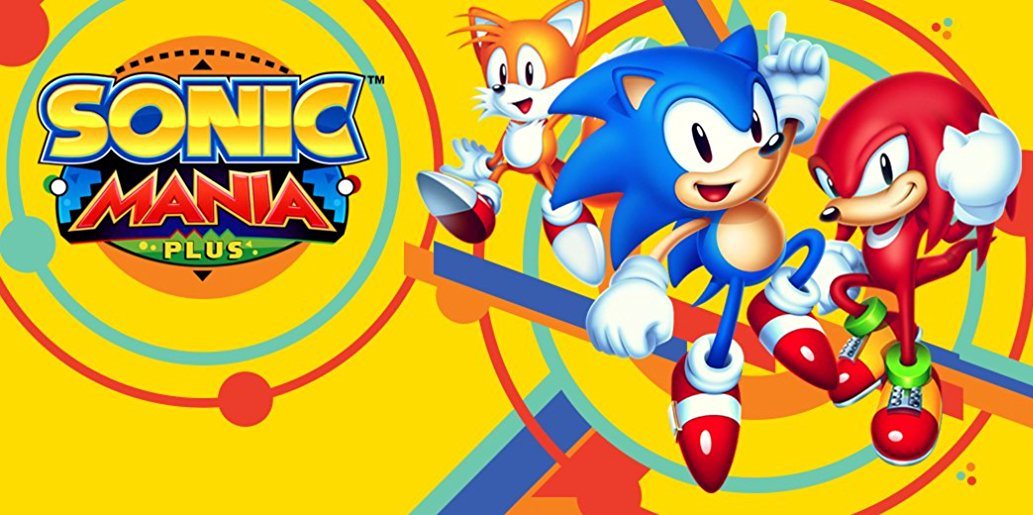

Remember the original game’s Marble and Labyrinth Zones? It was fast because it featured tightly designed levels that rewarded familiarization. Sonic was never meant to be fast because it played itself. Considering the breadth of the game, it’s not a major issue, though it would have been nice to cut down the automated gotta go fast sections by just a tiny bit. A few too many sections of a handful of acts feel connected by a few too many “Put your controller down or hold a single direction” moments. While the high-speed, linear sections are always a stimulating treat, Sonic Mania relies on them a tad too much. Sonic Mania Plus says “fuck that” and sticks to its guns, though it can very rarely miss the mark.

They think he’s supposed to be all fast all the time a misconception unfortunately reinforced through the countless modern games that nearly played themselves. A mix of visually extravagant high-speed sections coupled with more deliberate and inventively designed platforming sequences. One which Sonic Mania delivers effortlessly.Ĭhristian Whitehead, PagodaWest Games, and Headcannon show a deft command of what makes an exciting Sonic the Hedgehog level. The ability to make a stage seem so familiar yet so different at the same time is a difficult act to pull off. The extent to which Sonic Mania Plus re-invents familiar zones is commendable. Studiopolis may be one of Sonic’s most wacky and unique zones in his history, but it doesn’t end there. Thirty seconds into any of these remixed or new stages and you can immediately tell how much fun the team had pouring over this project. Despite being brand-new areas with no existing framework or assets to build off of, the new zones feature some of Sonic Mania‘s most inventive ideas. Mixed in with classic zones are entirely new stages like Studiopolis, Mirage Saloon, and Press Garden.

Bouncing off an enemy’s head, then performing the drop dash adds an extra layer to mastering momentum.īeyond this, returning zones like Chemical Plant feature entirely new mechanics and obstacles such as gooey bouncy gelatin and magnetic-like platforms. It’s a neat addition that I rarely used myself, but it’s got major potential for serious players. Doing so allows Sonic to speed forward the moment he touches ground. Jump, then press and hold the jump button again. What does Sonic Mania Plus add? The drop dash. Sonic 3 & Knuckles introduced elemental shields. Sonic the Hedgehog 2 added the spin dash. While the core design remains untouched, it adds enough new stuff to make it feel like a sequel rather than a retread. Add extra flourishes not possible on Sega’s 16-bit machine such as true transparencies and more complex background layers, and you’ve got a monumental passion project by fans for fans. Without the Genesis’ hardware constraints, the game can contain more active on-screen sprites along with with larger levels. Sonic Mania Plus honors the mainline traditional level-design ethos while expanding upon it. This creates the issue Sonic Forces fell harshly into whereby the game basically plays itself. A few nooks and crannies off the beaten path may house a shield or extra life, but you’re essentially moving forward the entire time. On the opposite end of the spectrum, more modern Sonic titles suffer from oversimplified level design. You had to put in some leg-work just to find the exit in many of Sonic CD‘s stages. Sonic CD abandoned this in favor of labyrinthine level design. Despite this clear direction, levels are massive, often littered with multiple paths that hide secrets or simply lead to the exit in a different way. The original mainline entries usually contain straightforward levels that are practically impossible to get lost in. The best Sonic games offer expansive, but linear levels. These tight controls and proper momentum-based physics have a major effect on the game’s design. Sonic Mania circumvents this entirely, accurately portraying his 1991-1994 golden years. There was something off about his physics that I couldn’t accurately describe. Sonic Generations was one of my favorite modern takes on Sonic, though even with that, classic Sonic never felt quite right.


 0 kommentar(er)
0 kommentar(er)
